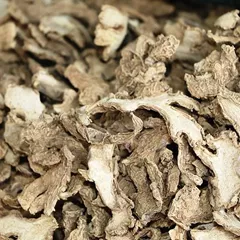Si Ni Tang
Si Ni Tang
Chinese: 四逆汤
Pinyin: Sì Nì Tāng
Other names: Four Rebellious Decoction, Frigid Extremities Decoction



Si Ni Tang
Si Ni Tang
Chinese: 四逆汤
Pinyin: Sì Nì Tāng
Other names: Four Rebellious Decoction, Frigid Extremities Decoction
Number of ingredients: 3 herbs
Formula category: Formulas that rescue devastated Yang
- Rescues devastated Yang
- Warms the Middle Burner
- Stops diarrhea
Contraindications: This formula is contraindicated in cases with true Heat and false Cold... This formula is contraindicated in cases with true Heat and false Cold characterized by cold extremities, thirst with a desire to drink cool beverages, dark urine, and a red tongue with a yellow coating. see more
Source date: 220 AD
Source book: Discussion of Cold Damage
The information provided here is not a replacement for a doctor. You shouldn't use it for the purpose of self-diagnosing or self-medicating but rather so you can have a more informed discussion with a professional TCM practitioner.
Si Ni Tang is a 3-ingredient Chinese Medicine formula with Prepared Aconite (Zhi Fu Zi) as a principal ingredient.
Invented in 220 AD, it belongs to the category of formulas that rescue devastated Yang. Its main actions are: 1) rescues devastated Yang and 2) warms the Middle Burner.
On this page, after a detailed description of each of the three ingredients in Si Ni Tang, we review the patterns and conditions that Si Ni Tang helps treat.
The three ingredients in Si Ni Tang

Zhi Fu Zi is a king ingredient in Si Ni Tang. Like the name indicates, it means it has more power than other ingredients in the formula.
1. Prepared Aconite (Zhi Fu Zi)
Zhi Fu Zi breaks through the Yin and revives the Yang. It is especially effective in warming and stimulating the Fire at the Gate of Vitality so that it disseminates throughout the body and reaches the extremities.

Gan Jiang is a deputy ingredient in Si Ni Tang. This means it helps the king ingredient(s) treat the main pattern or it serves to treat a coexisting pattern.
2. Dried Ginger (Gan Jiang)
Gan Jiang warms the Middle Burner and eliminates Cold, which strengthens the Spleen's functions of transforming and transporting food and fluids.

Gan Cao is an assistant ingredient in Si Ni Tang. This means that it either serves to reinforces the effect of other ingredients or it moderates their toxicity.
3. Liquorice (Gan Cao)
Part used: Dried root and rhizome
Nature: Neutral
Taste(s): Sweet
Meridian affinity: HeartLungSpleenStomach
Category: Tonic herbs for Qi Deficiency
Gan Cao augments the Qi, strengthens the Spleen, reduces the toxicity and moderates the drying properties of the other herbs.
Si Ni Tang is used to treat Lesser Yin Cold Transformation

'Cold' as a body pattern in Chinese Medicine is one of the so-called "Eight Principles". Learn more about Cold pattern in Chinese Medicine
Lesser Yin Cold Transformation
Pulse type(s): Deep (Chen), Slow (Chi), Weak (Ruo)
Symptoms: Chills Diarrhea No thirst Cold limbs Listlessness Feeling of cold Desire to sleep Lying with body curled Frequent pale urination
Si Ni Tang is sometimes prescribed by TCM practitioners to treat Lesser Yin Cold Transformation. This pattern leads to symptoms such as feeling of cold, diarrhea, no thirst and chills. Patients with Lesser Yin Cold Transformation typically exhibit deep (Chen), slow (Chi) or weak (Ruo) pulses.
This is one of the two patterns of the Lesser Yin stage, the second Yin stage of the Six Stages theory.
The Lesser Yin stage is where the disharmony mainly affects the Kidney Channel.
The Kidneys are considered the root of Yin and Yang in the body. As such, this stage has two patterns, called... read more about Lesser Yin Cold Transformation
Formulas similar to Si Ni Tang
Gan Cao Gan Jiang Tang is 67% similar to Si Ni Tang
Wen Pi Tang is 60% similar to Si Ni Tang
Li Zhong Wan is 50% similar to Si Ni Tang
Ling Gan Wu Wei Jiang Xin Tang is 40% similar to Si Ni Tang
Bai Zhu Fu Zi Tang is 40% similar to Si Ni Tang
Gui Zhi Ren Shen Tang is 40% similar to Si Ni Tang










